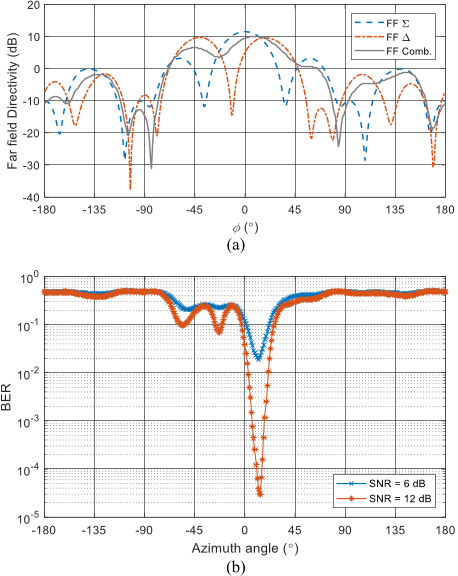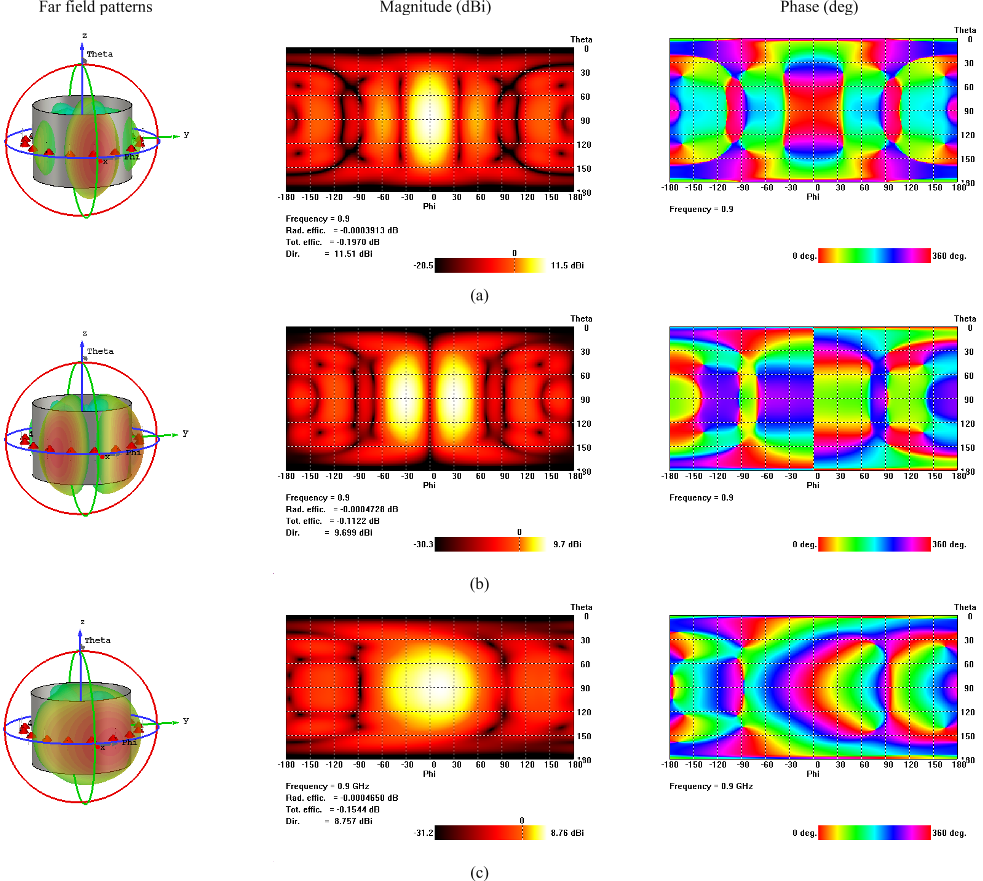IEEE TRANSACTIONS ON ANTENNAS AND PROPAGATION
Target Location Using Dual Beam Directional Modulated Circular Array
Vincent Fusco, Anil Chepala, M. Ali Babar Abbasi
Abstract— A new concept directed towards the location of an object
within a sector of space is introduced, by using a combination of the
properties associated with directional modulation when implemented on a
circular antenna array. In particular, we show that a circular antenna array
can be made to project orthogonal data streams on orthogonal spatial beams
and through this process create a temporal and spatial interference pattern
that can be used for target location. This is demonstrated by way of
simulation of a two beam sixteen element circular antenna array carrying
QPSK data.
Index Terms— Circular array, directional modulation (DM), phase-
shift keying (PSK), physical-layer secure communication.
I. INTRODUCTION
Directional Modulation (DM), is a transmitter technology that is
capable of projecting digitally modulated information signals into pre-
specified spatial directions while simultaneously distorting the
constellation formats of the same signals in all other directions, [1].
Thus affording a level of physical layer security.
Fig. 1 shows a DM system modulated for quadrature phase-shift
keying (QPSK). From this figure it can be seen that the standard
formatted QPSK constellation patterns, in In-phase and Quadrature
(IQ) space, are not preserved along spatial directions away from the
pre-defined observation direction ϕ° (along azimuth plane), making it
difficult for potential eavesdroppers to intercept.
In [2] a DM method which mapped encoded orthogonal I, Q data
streams onto two different antenna far field patterns was given. This
method was called the dual-beam DM technique and allowed from a
knowledge of the two far field patterns projected from the array the
transmitted symbol sequence to be decoded only along the two pre-
defined directions where the two far field patterns have the same
magnitude response. It was shown in [3] that a circular antenna array
can be made to project multiple far field beam patterns when suitably
excited, for example using a Butler Matrix. This leads to the
interesting possibility that a circular antenna array can be made to
project the two orthogonal beams each of which can be separately
encoded. This approach adds additional flexibility as well as grossly
simplifying the practical arrangements in [2] for achieving the same
result. In addition, circular arrays have another very useful property.
Namely, by offsetting the phases applied to the Butler Matrix exciting
the circular array the resulting far field patterns can be made to rotate
through 360° in azimuth without the beam shapes distorting [4].
In this paper we show that by co-locating the transmitter and
receiver at the phase center of a circular array we can devise a radio
location strategy wherein bit error rate (BER) can be used as an
indicator of the presence of a target in a given sector of the radar’s
field of view, while preserving (i) the ability to track the target as it
moves in azimuth (ii) general target surveillance. Section II describes
the main properties of the circular array and the dual beam DM
approach that are relevant to this paper. Section III discusses the far
field radiation features based on numerical simulation results for an
example 16 element circular array. The resulting IQ spatial trajectory
loci and associated BER are also discussed from which target location
can be found. Two cases are examined (i) symmetrical beam overlay
and (ii) asymmetrical beam overlay. Section IV discusses the tracking
characteristics of the circular array based system when the transmitter
and the receiver are co-located at each array element, monostatic radar
fashion, while the findings are concluded in Section V of the paper.
II. GENERAL CIRCULAR ARRAY AND DUAL BEAM DIRECTIONAL
MODULATION PRINCIPLES
A. General Circular Array Principle
Consider a multimode circular array consisting of 16 half-
wavelength dipole antennas. The principle of operation of a
multimode circular array is most easily seen by considering a
continuous distribution of current, [5]. The horizontal far field
directional pattern ‘F(ϕ)’ of a continuous circular aperture is a periodic
function with period 2π. Hence, it can, mathematically be expressed
as a complex Fourier series that is a function of both amplitude and
phase.
Manuscript received February 5, 2018, revised XXX, published XXX
(projected). This work was supported by Queens’s University of Belfast
Studentship, and the UK Engineering and Physical Science Research Council
(EPSRC) under Grant EP/N020391/1.
V. Fusco, A. Chepala, and M. A. B. Abbasi are with The Centre for Wireless
Innovation (CWI), The Institute of Electronics, Communications and
Information Technology (ECIT), School of Electronics, Electrical Engineering
and Computer Science (EEECS), Queen's University Belfast, Belfast BT3
9DT, United Kingdom (email: v.fusco@ecit.qub.ac.uk,
achepala01@qub.ac.uk, m.abbasi@qub.ac.uk).
Color versions of one or more of the figures in this communication are
available online at http://ieeexplore.ieee.org.
Digital Object Identifier 10.1109/TAP.2018.xxx
This is the author's version of an article that has been published in this journal. Changes were made to this version by the publisher prior to publication.
Copyright (c) 2018 IEEE. Personal use is permitted. For any other purposes, permission must be obtained from the IEEE by emailing pubs-permissions@ieee.org.






![Fig. 1. QPSK DM System Concept, [1].](/figures/fig-1-qpsk-dm-system-concept-1-1x0ebmvm.png)











